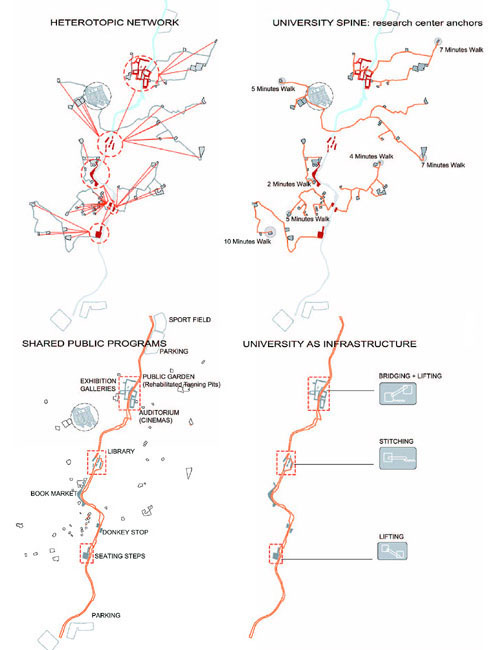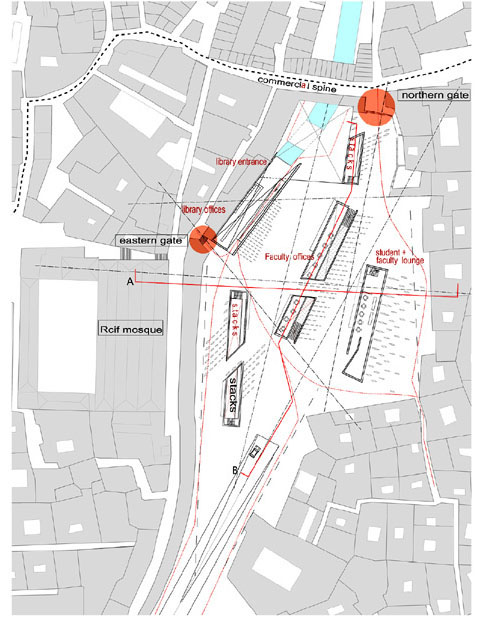Half Dose #32: Hybrid Urban Sutures
One of this year's P/A Awards (now administered by the twice-removed-from-Progressive-Architecture Architect Magazine) is Aziza Chaouni's Hybrid Urban Sutures: Filling in the Gaps in the Medina of Fez, Morocco. Started as a graduate thesis and furthered via independent study, the project that "analyzes the urban, architectural, and social issues affecting Middle Eastern historic districts" is an amazing piece of urban design. The project's main component is her proposal to return Al-Qarawiyin University to the medina from its current suburban location, adding public space and cultural facilities to the dense area.
Chaouni picked three sites as University research centers, each acting as an anchor along the Fez River, the medina's urban spine.
The analysis and proposed interventions are helped by the clarity of the graphics, here showing the three anchors, their relationships to the existing context, and their functions.
One intervention is a theology library inserted into an existing plaza. The new buildings would work with the current flow of pedestrians through the site, bringing a certain level of order to the historically unplanned "chaos."
Stacked circulation and stepped massing gesture to the local circumstances, though the patterned punctures in the exterior walls seem to relate to a larger, Middle-Eastern context.
Another anchor is the economics research center, a conglomeration of buildings that incorporates public spaces while also acting as circulation to connect multiple levels.
In addition to the research clusters, classrooms (in pink) are scattered throughout the medina, an admirable decision that creates improvement in places beyond the spine.
Chaouni also tackles the existing leather tanneries, proposing to use the pits as reclaimed green space. This decision is questionable as it replaces a piece of economic infrastructure with something that doesn't apparently offer economic potential. Perhaps flowers and vegetable can be grown within and then sold in the medina.
Regardless of the above criticism, the imagined end result is very appealing.
Chaouni's study is "slated for publication by Paris' Editions Le Fennec." I can't wait.








Comments
Post a Comment
Comments are moderated for spam.